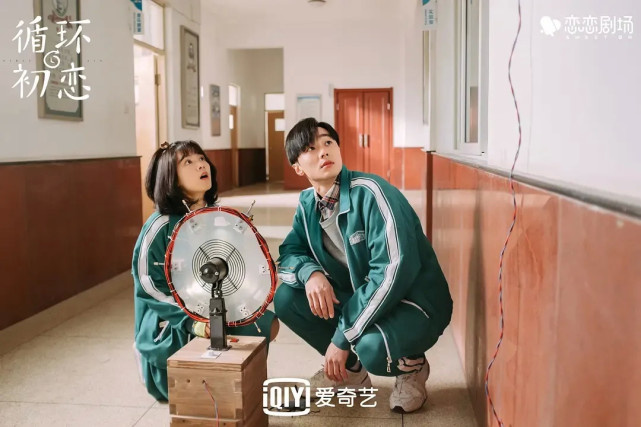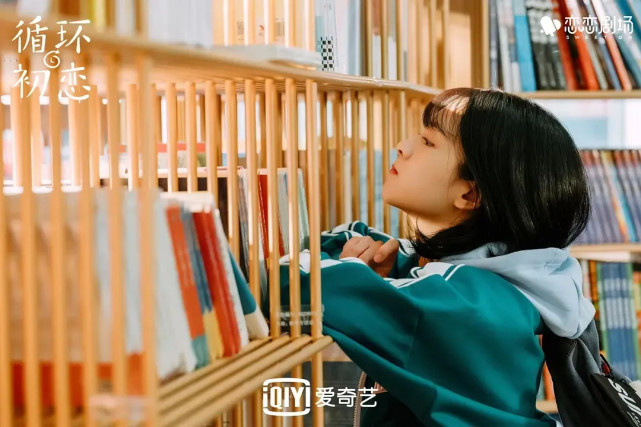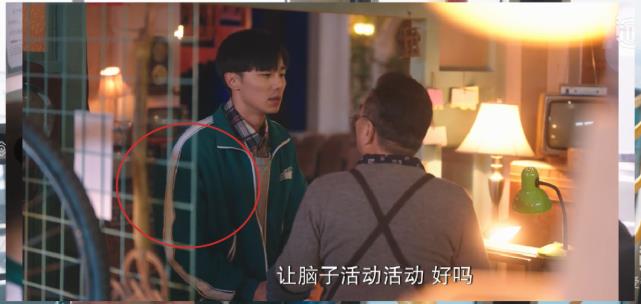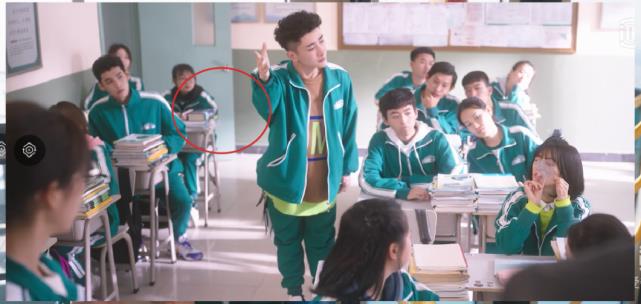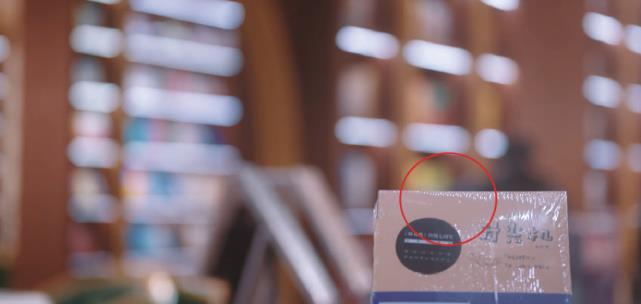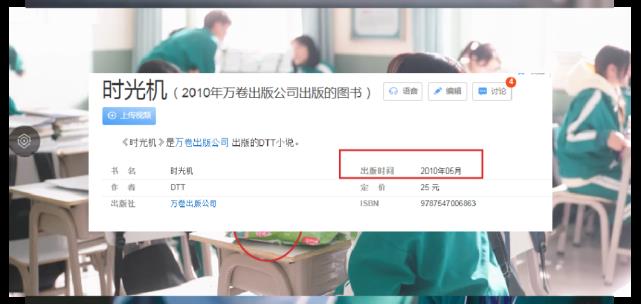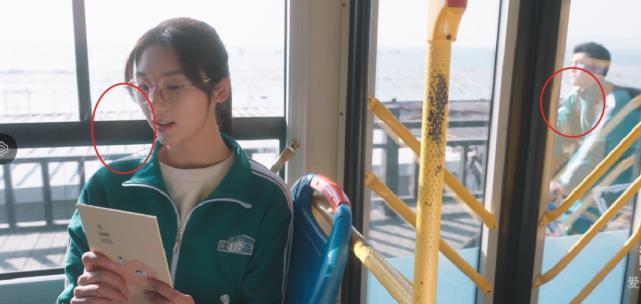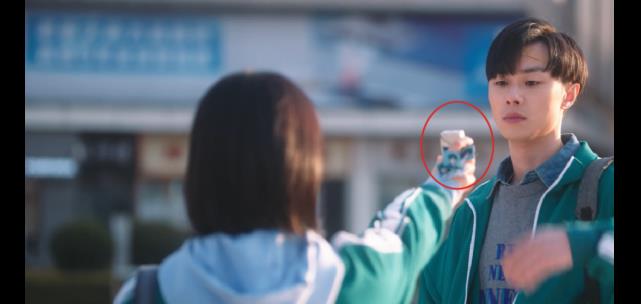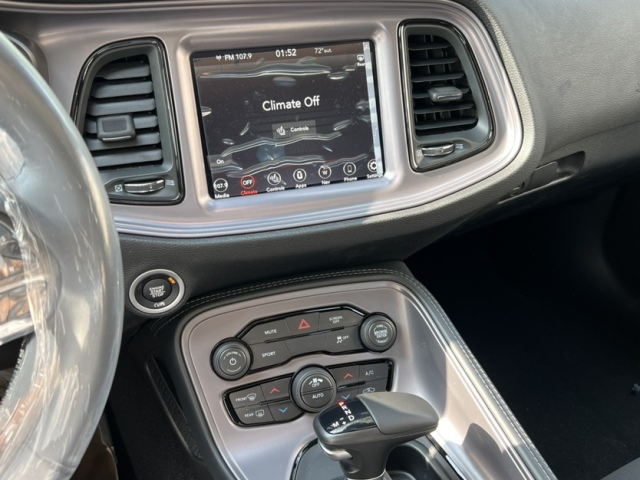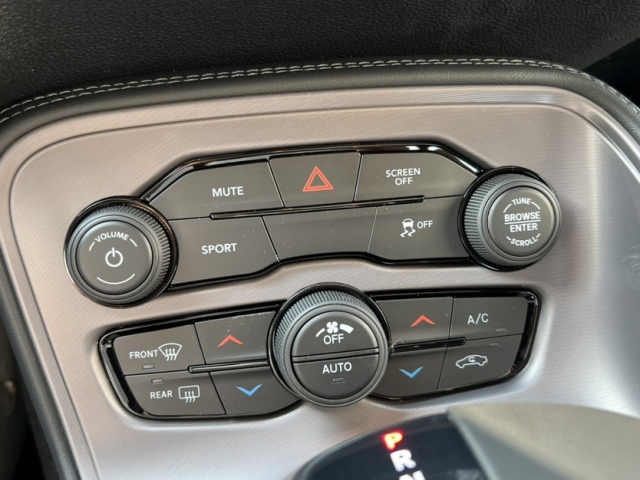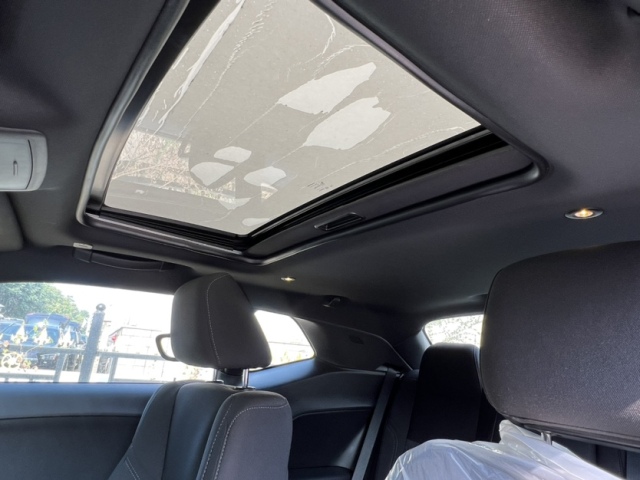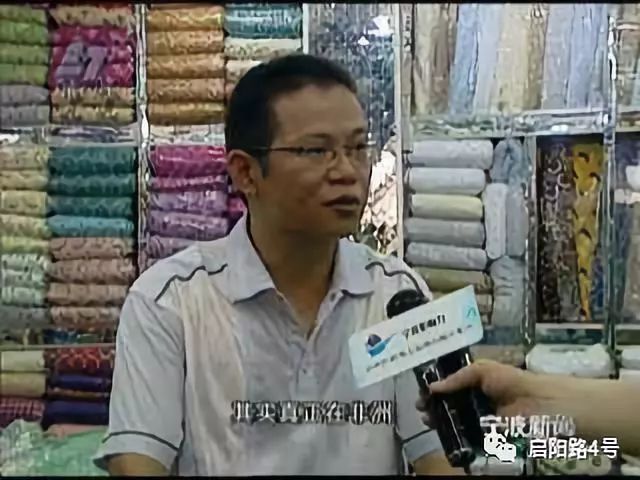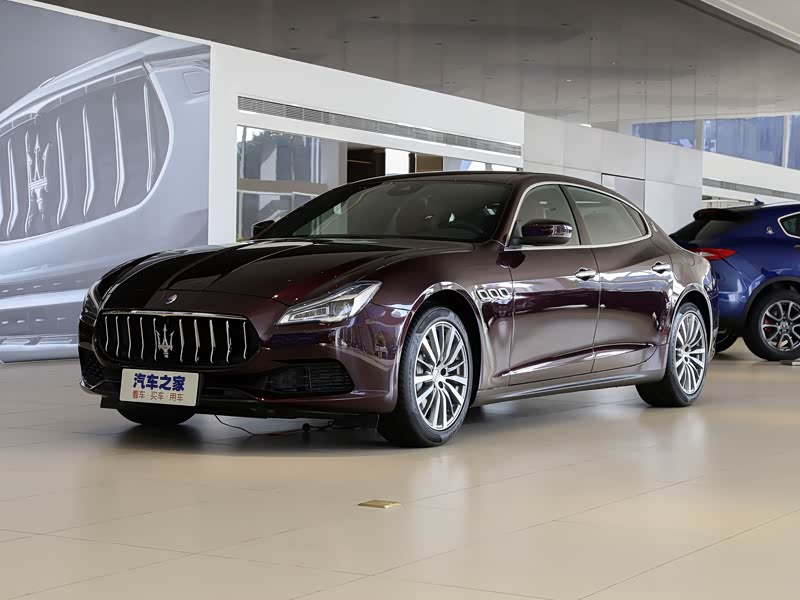Joint Declaration Property enterprises, as the front-line guarantee units for the efficient operation of the city, quickly threw themselves into the prevention and control work after the outbreak, set up headquarters and regional epidemic prevention teams in succession, actively assumed social responsibilities and implemented relevant national epidemic prevention policies. Jiahe Jiaye Property Service Research Institute, as a professional leader in the property industry, fully affirmed the important role of the property industry in this epidemic prevention battle. At the beginning of the epidemic, it put forward the prevention and control principle of "the first line of treatment is in medical treatment, and the first line of epidemic prevention is in the property".
On February 6th, Jiahe Household collected and summarized the epidemic prevention experience of 16 top 100 property enterprises, and launched the Epidemic Prevention Guide for Residential Property Version 1.0 (click the blue font to see the details). After the guide was issued, we successively received epidemic prevention solicitation letters from many property enterprises. Through continuous iteration and summarization, up to today, we have combined the excellent epidemic prevention experience of 33 top 100 property companies, jointly established a research group on special service topics of property management industry, and summarized and launched a more comprehensive and perfect "COVID-19 Epidemic Prevention Guide for China Property Management Industry (Commercial Property) Version 1.0".
At present, the member units of the research group have accumulated a management area of over 2.5 billion square meters, covering 31 provinces, nearly 400 cities and counties and over 50 million owners, and can sum up representative industry standards.
Recently, enterprises will resume work in full swing. In order to help property enterprises to carry out epidemic prevention in office buildings, industrial parks, hotels and other commercial offices in various cities smoothly, ensure the normal operation of enterprises, and also sum up their experience in epidemic prevention in commercial offices in the future, Jiahe Family Industry has jointly established a joint prevention and control mechanism for commercial property epidemics with a number of outstanding commercial property enterprises in the industry.
The establishment of the joint prevention and control mechanism aims to quickly respond, coordinate linkage, and combine excellent practical cases and valuable experience of enterprises to write and launch a set of standardized and refined guidelines for epidemic prevention of commercial properties to fight the epidemic. In the future, we will continue to introduce the research system, service standards and excellent service experience of the property industry to the industry.
This "China Property Management Industry novel coronavirus Epidemic Prevention Guide (Commercial Property Edition) Version 1.0" focuses on effectively preventing the epidemic from spreading in commercial projects, and extracts 20 detailed rules and 62 measures from 7 dimensions, and shares the characteristic commercial epidemic prevention cases of excellent property enterprises.
Research Group on Special Service of Property Management Industry (to be established)
February 24, 2020
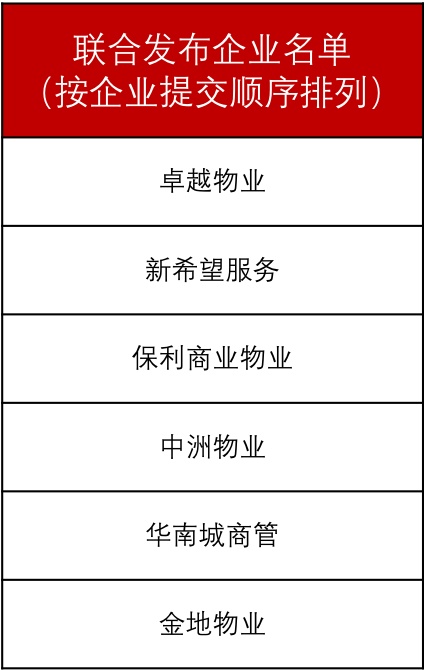
China Property Management Industry COVID-19 Epidemic Prevention Guide (Commercial Property Edition) Version 1.0.
First, the property organization and management criteria
1. Set up a commercial epidemic prevention special team (1) Set up a commercial epidemic prevention team led by the corporate headquarters to make unified arrangements for epidemic prevention work; (2) On the basis of the previous work, through combing and induction, a Handbook on Epidemic Prevention for Commercial Offices, industrial parks and other commercial offices is refined.
(3) All commercial projects are revised and improved according to their own project characteristics and the latest requirements of the local government, so as to fully implement the normative, scientific and effective prevention and control measures.
2. Establish close contact with the resident units.
(1) Inform the resident unit of the current work and preparations made by the property management company, as well as the matters needing attention and suggestions on epidemic prevention measures of the resident unit, and remind them to work in isolation and peak shift; (2) Send a survey form to the docking person of the stationed unit, count the time of returning to work of the stationed unit and the situation of Hubei employees, and ask the personnel from Hubei area or who have contacted Hubei (including those who will be employed after the year) to isolate themselves for 14 days, and only after the observation period is confirmed to be asymptomatic can they enter the building for work;
(3) Keep real-time communication with the resident units, and report any abnormality immediately.
3. Implement relevant policies of local government.
(1) Assign special personnel to communicate with the local government departments, receive, publicize and execute the epidemic prevention documents issued by the government departments, and ensure that the health and epidemic prevention, market supervision and housing construction departments in the jurisdiction should achieve joint prevention and control, and ensure that all prevention and control measures are implemented; (2) Strengthen the information submission, and each property service enterprise shall report the epidemic prevention and control work within 24 hours before 12:00 noon every day to the resident unit and the community (town office);
(3) Those who fail to perform their duties in the epidemic prevention and control work and cause epidemic harm will be investigated for responsibility according to law.
Second, the staff management guidelines
1. Internal training of employees (1) Property companies set up special epidemic prevention teams to conduct unified epidemic prevention training for employees, explaining in detail the knowledge of epidemic prevention and control, the basic knowledge of disinfection and disinfection, and the correct configuration of disinfectant;
(2) Training and management of outsourced units (cleaning personnel).
2. Employee health management
(1) All employees shall be quarantined for 14 days before returning to work; (2) After employees take up their posts, they shall adhere to the system of submitting daily health information to employees, and require all employees of the company to report their health status twice before going to work and before leaving work every day;
(3) Establish a ledger to ensure that epidemic prevention services are safer and better.
Three, personnel in and out of the management criteria
1. Entrance and exit of the building (1) The property management company arranges special personnel to check the wearing of masks for all people entering and leaving the building. The wearing of masks must be in accordance with the norms and safety, and those who do not cooperate are not allowed to enter the building; (2) All personnel entering and leaving the building must complete the temperature test at the entrance and cooperate with the building staff to sign the Personal Health Commitment and Epidemic Prevention Book. Only after passing the temperature test and signing the letter of commitment can they enter the building;
(3) Assign special personnel to guide the personnel entering and leaving the building, so as to reduce the waiting time of the personnel in line, which not only ensures the effective control of the personnel entering and leaving the building, but also does not affect the personnel entering the building.
2. Parking lot
(1) Arrange a special person at the entrance of the parking lot to strictly control and monitor the body temperature of all the people entering the garage; (2) The white list issued by those with normal body temperature shall be recorded and kept, and no entry conditions shall be allowed;
(3) The fresh air in the underground parking lot shall last no less than 4 hours a day, and the vehicle parking area and main roads shall be disinfected no less than 2 times a day.
3. High exposure population
While prohibiting high-exposure people such as express delivery and take-out from entering the building, it is necessary to ensure that these items can reach customers safely and on time. (1) For express delivery, express delivery pick-up points can be set up in specific areas of the building, and the temperature of the courier can be detected and the express delivery disinfected to eliminate hidden dangers;
(2) For take-out, set up take-out and take-out points, and prohibit take-out and take-out personnel from entering the building, so as to reduce the risks brought by outsiders.
IV. Guidelines for Prevention and Control of Public Areas
1. Elevator (1) Restrict the passenger flow in the external area of the elevator, guide the owners of low floors to choose the stairs as far as possible, and try to avoid taking the elevator; (2) Reduce the density of people in the elevator hall and the number of people taking the elevator; (3) Cover the elevator button with plastic wrap and change it every hour; (4) In order to avoid cross-infection, the elevator car shall be disinfected once every hour, and the ratio concentration of disinfectant shall be increased;
(5) Put paper towels in the elevator car for people coming and going.
2. Central air conditioning system
(1) During the epidemic period, in order to avoid air cross-contamination, the return air valve of the floor air-conditioning treatment unit was closed, and the fresh air valve was fully opened, so that the system was turned into a new air mode; (2) Disinfect the air conditioning unit every week; (3) Open fresh air from 8: 00 to 18: 00 every day to ensure indoor air circulation;
(4) Give priority to natural wind ventilation to ensure smooth indoor air.
3. Office area
(1) Customize disinfection of the office area of the resident unit, and advocate regular ventilation in the office area; (2) When customers use the meeting for too long, remind them to open the window for ventilation once, and the time is not less than 5 minutes; (3) When no one uses the conference room, ventilate the doors/windows; (4) Ventilation for 2-3 times a day, each time for not less than half an hour;
(5) All control panels in the conference room shall be disinfected and covered with film, and the remote control equipment shall be covered with film and replaced every 2 hours;
4. Bathroom
(1) carry out high-frequency disinfection on the bathroom and strengthen ventilation; (2) Focus on the protection of hand contacts such as door handles and faucets, and increase the frequency of cleaning; (3) Adding antibacterial hand gel; (4) The exhaust fan in the toilet is always open;
(5) At the same time, increase the disinfection frequency depending on the number of users.
5. Functional area of the building
(1) The rest tables and chairs in the smoking area should be evacuated to avoid employees staying or gathering; (2) Stop using the visitor plane in the lobby to avoid infection brought in by outsiders;
(3) The maternity room and gym are suspended;
6. Building Restaurant
(1) Strengthen the health supervision of the staff of the catering company in the building, require the staff of the catering company to monitor their body temperature twice a day, and report to the property management company, and monitor the body temperature of the staff who enter the restaurant to take meals to ensure the safety and health of customers; (2) Dining staff in the building should adopt a separate dining system, and the staff should be equipped with separate tableware, and it is forbidden to gather and eat face to face;
(3) The temperature in the center of the meal is not lower than 75 degrees Celsius. All raw and cold meals should be suspended, and take-away food should be used instead of in-class food. Bring your own lunch box and have a healthy meal.
Five, prevention and control information publicity guidelines
1, offline publicity (1) set up "epidemic prevention and control" related signs indoors and outdoors; (2) Make publicity and guidance in conspicuous positions such as bulletin boards and elevator entrances of the building to enhance the protection awareness of merchants and employees; (3) Follow up the latest epidemic prevention measures and precautions in time on the LED display screen in the lobby and elevator entrance of the building;
(4) Remind the staff on each floor to do a good job in epidemic prevention, and guide all members of the building, Qi Xin, to work together to fight the epidemic.
2. Online publicity
(1) The property management enterprise arranges a special person to write a professional rework protection guide and push it through the enterprise official micro;
(2) For office epidemic prevention knowledge, employees can publicize it on various online platforms such as circle of friends and business households.
Six, epidemic prevention materials control guidelines
1. Material purchase: through various channels, accelerate the purchase of medical masks, alcohol, disinfectant, temperature measuring gun and other prevention and control materials, among which masks should have a certain amount of reserves to ensure timely distribution; 2. Material purchase
Strictly control the warehousing and warehousing management of epidemic materials, especially hazardous materials;
3, material distribution
Set up 1F entrance mask collection point, and provide special personnel to provide employees with mask collection and correct use guidance services on site every day.
Seven, other special epidemic prevention guidelines
1. Set up an isolation room (1) Set up a special isolation room in the building, and arrange for employees who have abnormal body temperature to enter the isolation room for a temporary rest;
(2) Arrange professional medical personnel to make further examination for those with abnormal body temperature.
2. Exclusive classification of discarded masks
(1) Set up a special trash can for recycling discarded masks on the periphery of the building to standardize the delivery of discarded masks; (2) Waste masks and other epidemic prevention articles are packaged separately and disinfected; (3) The garbage is treated by a closed extrusion garbage truck to reduce the spread of viruses;
(4) Increase the daily disinfection frequency of trash cans and cleaning rooms.
3. Provide errand service
In order to avoid the risk of virus spread caused by people gathering, employees of property companies can provide errands for customers. For example, the online ordering function is opened, and the daily menu is provided, which is delivered by specialized personnel.
Case sharing of epidemic prevention in characteristic commercial offices
I. Excellent Property
In order to ensure the normal and safe development of economic production order during the epidemic period, excellent property policy and scientific epidemic prevention, comprehensive prevention and control measures for returning to work were deployed in many office buildings across the country.
1, in and out of the gate and elevator high frequency disinfection:
The elevators are additionally provided with button covering film and elevator button special paper, and each elevator is disinfected with medical alcohol and the disinfection/replacement frequency is increased from 2 hours to 1 hour; At the same time, the exhaust facilities in the elevator are always open, increasing the number of air changes.
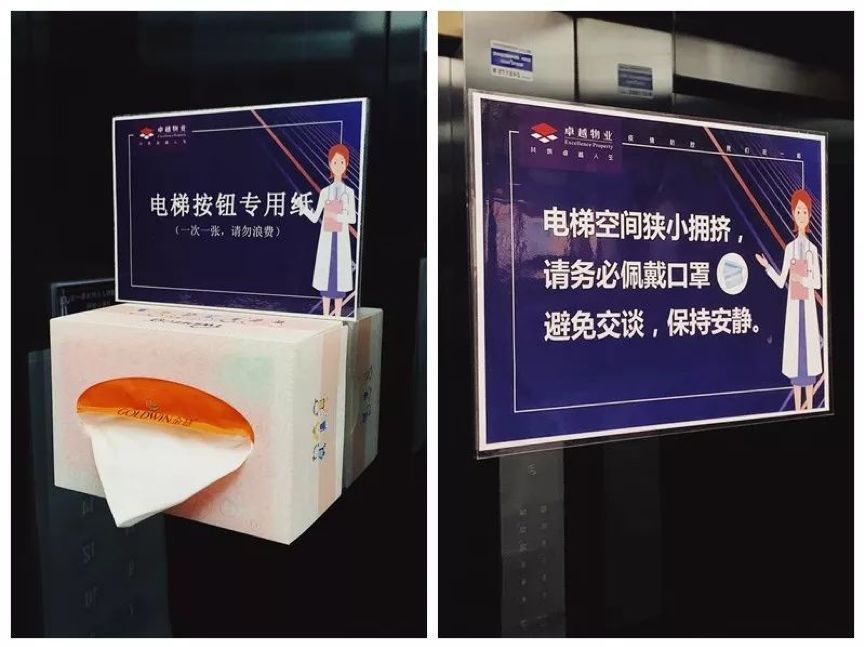
2. Set up temporary isolation room for epidemic detection and community linkage mechanism:
Set up a temporary isolation point in the peripheral area of the office building to isolate those who have exceeded the standard in body temperature detection and have symptoms such as cough and chest tightness, and inform the medical staff to take them away, while keeping the high-frequency area disinfected.
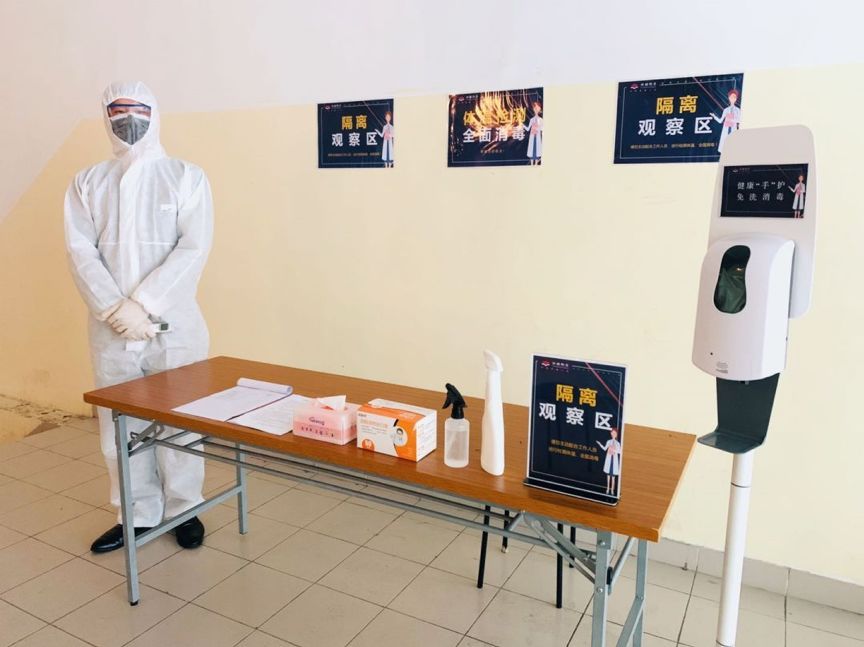
3, fully open online communication, information check at any time.
You can check the emergency announcements of office buildings during the epidemic by downloading and identifying the excellent O+APP/ applet, and you can communicate online in the property services module at any time. For partners who need property services during the epidemic, you can learn about the relevant service contents and the application methods of the contents in the O+ property services section and download the required application materials in advance.
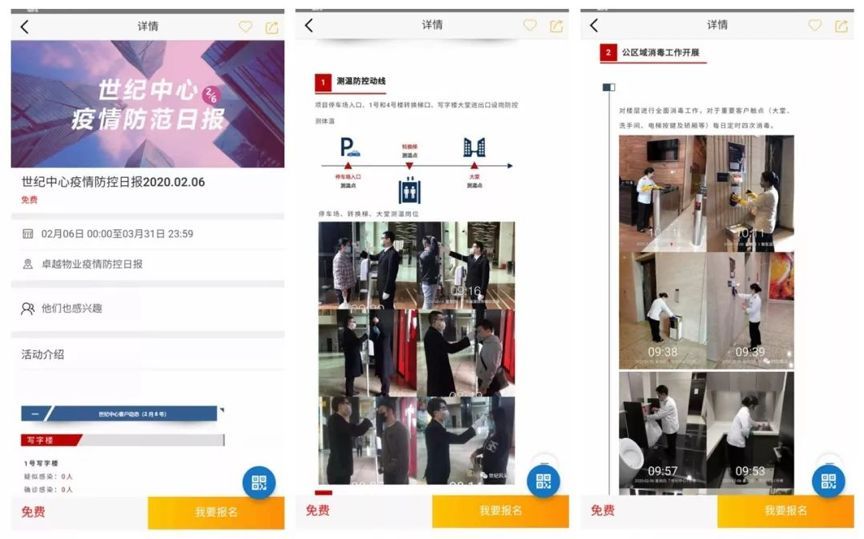
4, peace of mind package, safe delivery
During the epidemic, Premier Property and Premier Commerce launched the "Peace of Mind Package" office delivery service. The property will be delivered by a dedicated person under overall management, and the exclusive channel for epidemic prevention and control will be delivered safely, effectively reducing the contact of unconventional personnel, reducing the risk of personnel contacting and spreading the epidemic, and ensuring office safety.

5. Set up express-take-away transfer station.
During the epidemic period, in order to reduce the contact frequency, the courier/takeaway personnel will deliver the goods to the courier cabinet or the designated area, and the excellent building distribution staff will uniformly control the goods and kill and protect the transfer station.
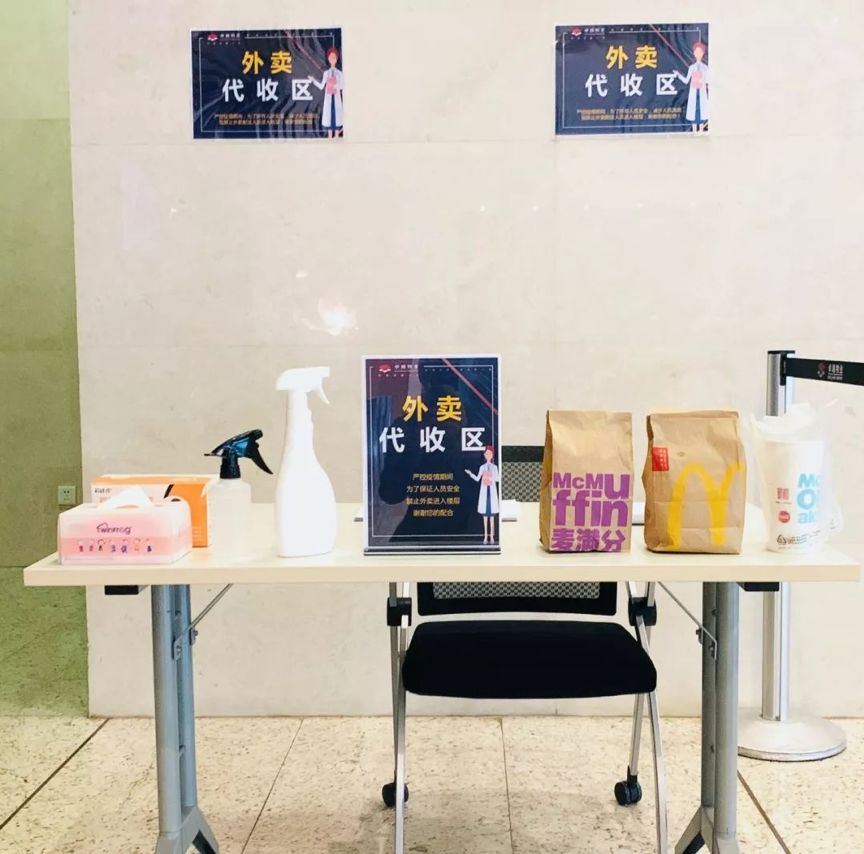
6, artificial+thermal imaging thermometer double guarantee
In order to identify the fever more conveniently and effectively, in the excellent and dense office building, a thermal imaging thermometer is used at the same time of manual temperature measurement, and a special person is assigned to monitor the temperature measurement of personnel in real time.
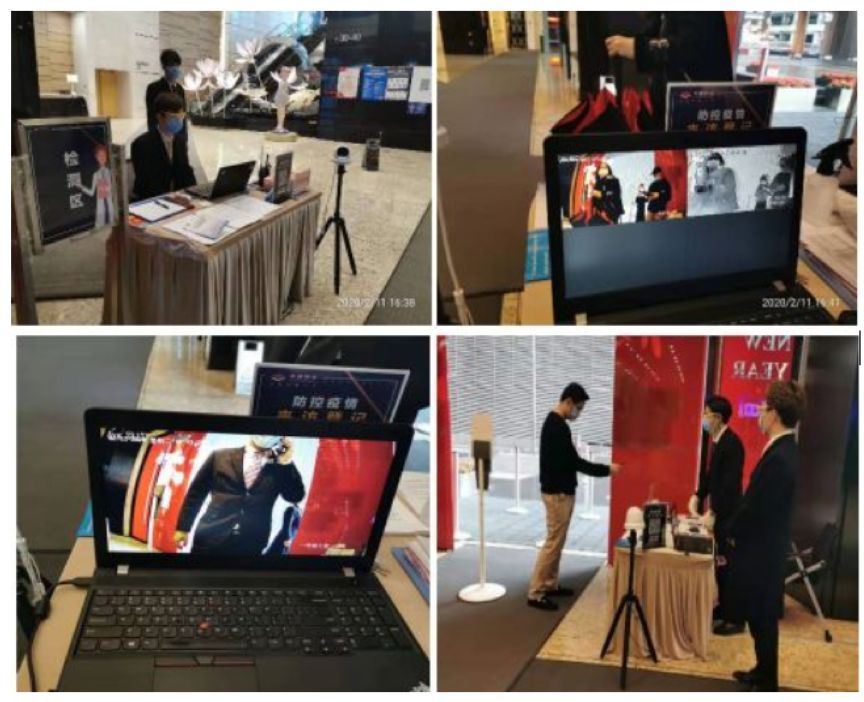
7, enterprise restaurant epidemic control
For corporate customers, there are staff restaurants. In terms of restaurant epidemic control, Zhuoyue Property has also formulated and launched a series of services for employees to eat with confidence. Including daily inspection of restaurants; Adjust the spacing and orientation of tables and chairs in the dining room to keep one-way dining; Assist corporate customers to customize the dining demand statistics, summarize the daily demand and package the catering suppliers in advance, so that employees can take the post-meal card to eat, and configure lunch box recycling points on each floor for unified disinfection.
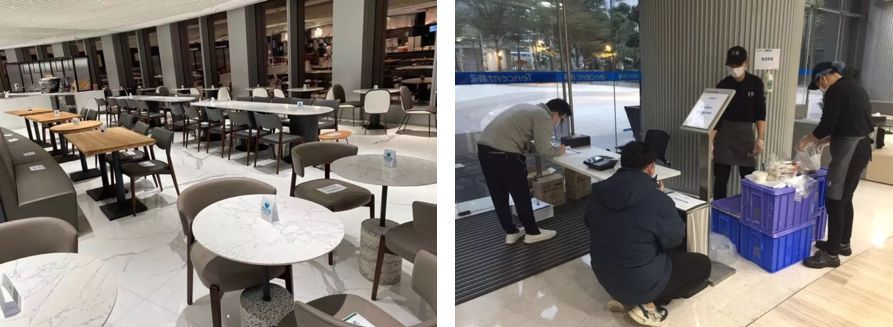
Second, the new hope service
1, the establishment of epidemic prevention organizations, the full implementation of various measures.
The new hope service set up a three-level epidemic prevention organization at the first time, and the group-region-project was in a state of emergency epidemic prevention; Actively respond to the "first-level response" of public health and safety initiated by international and local governments, and strictly implement the national "Safety Production Law" and the enterprise project safety production management system (EHS management); For the temperature detection of customers and employees of commercial enterprises, their own employees, outsourced employees and foreigners, all personnel are required to wear masks, strengthen the management measures of entrances and exits, and implement temperature detection and real-name registration; Most employees cancel their vacations and have been fighting in the front line; Establish an emergency liaison organization for commercial and enterprise projects and implement "one daily report"; Start the inventory and reserve of epidemic prevention materials; Follow up and respond to the epidemic prevention information published by the health department, hospital and street office of the country and the city.
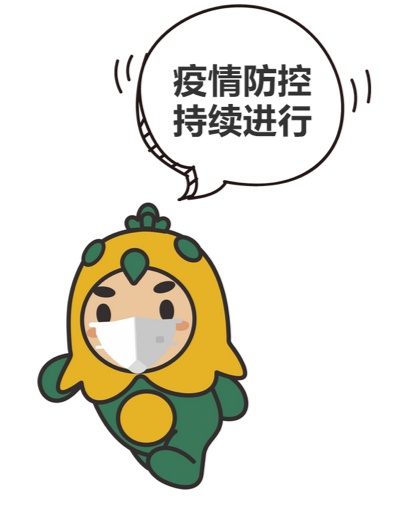
2, the implementation of internet plus wisdom.
Business buildings are often crowded with people, and most of them have migrated during the epidemic period. In order to ensure the health and safety of all enterprises and employees, New Hope Service cooperated with supplier partners to urgently develop and complete the access management system of "internet plus Smart Pass" in five days, and collected the necessary information on epidemic prevention for all the people entering and leaving, and checked and verified their health status and contact history in advance.

3, garage automatic spraying disinfection, pedestrian disinfection blanket
Auto-spraying disinfection is installed in the garage, and the wheel parts are disinfected centrally for safety and epidemic prevention; Pedestrians are provided with disinfection blankets and a 1-meter equidistant safe queuing area, so that customers can "be farther away and feel more at ease".
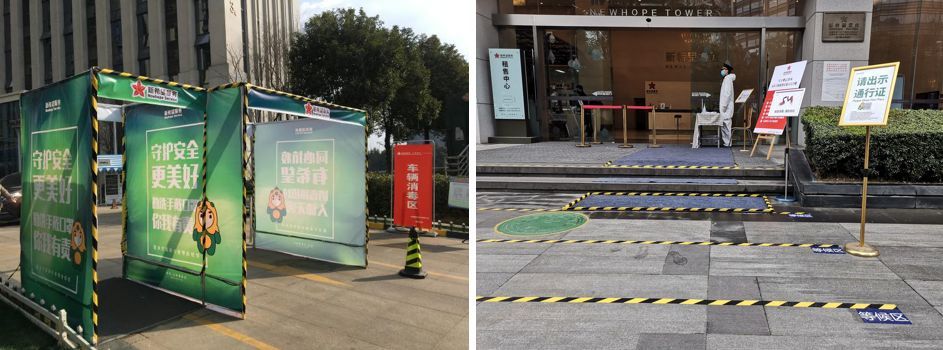
4. Elevator Jiugongge
Advocate low-floor customers to exercise and climb stairs; High-rise customers take the elevator in nine squares.
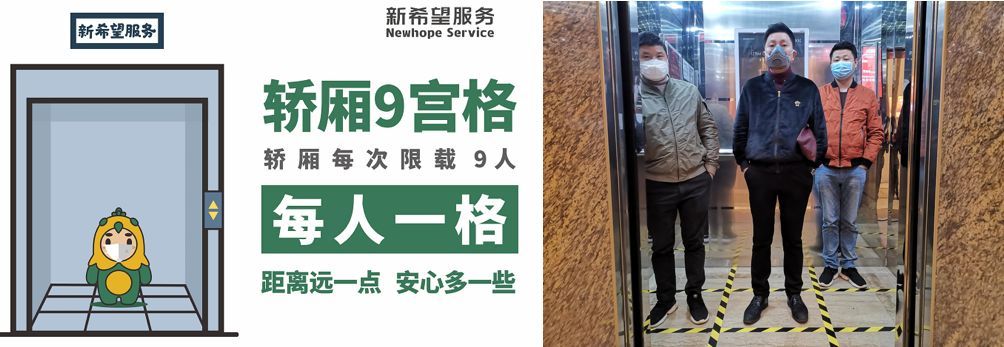
5, cloud disinfection
"Disinfection in the Cloud" The new service products developed during the epidemic period have stimulated small and micro enterprises to meet the epidemic prevention needs of owners and customers, while developing their own business, they have reduced the impact of the epidemic on the survival and development of small and micro enterprises.
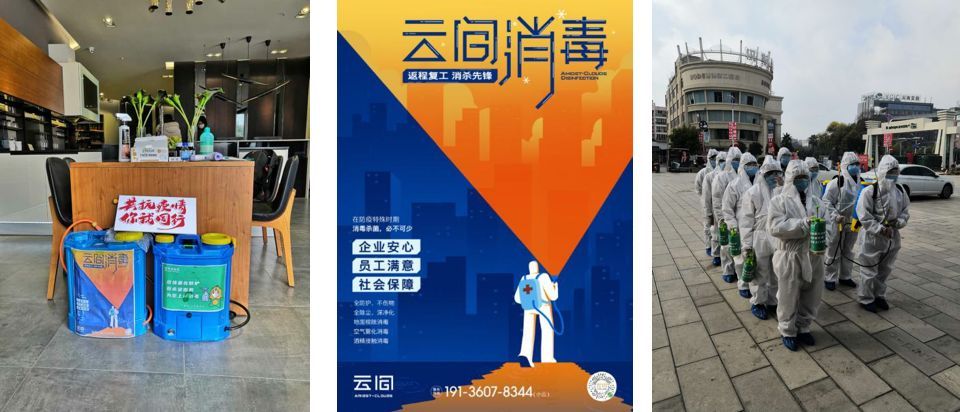
6, box meal distribution
After the enterprise returns to work, it provides lunch box distribution for customers in the park/office building; The whole process of lunch box from production to distribution is ultraviolet disinfection, so that customers can rest assured of their office and life.
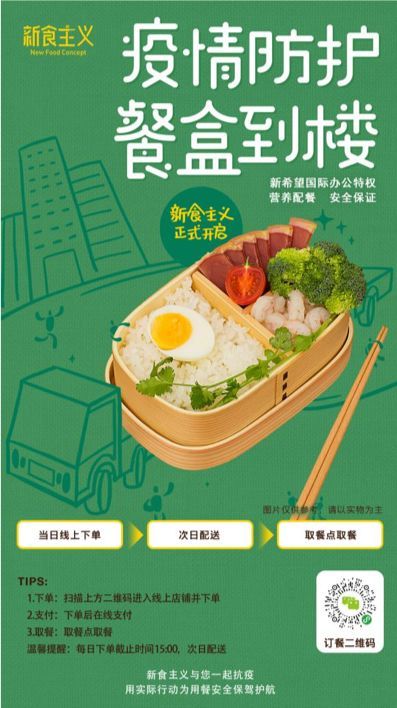
7. Joint epidemic prevention
New Hope Service creates a safe working environment for customers, not only for one customer, but also for the health of all enterprises and employees. We especially appeal to all enterprises to work together with New Hope Service to build an epidemic response plan and strengthen epidemic prevention from four dimensions: environment, personnel, materials and system.
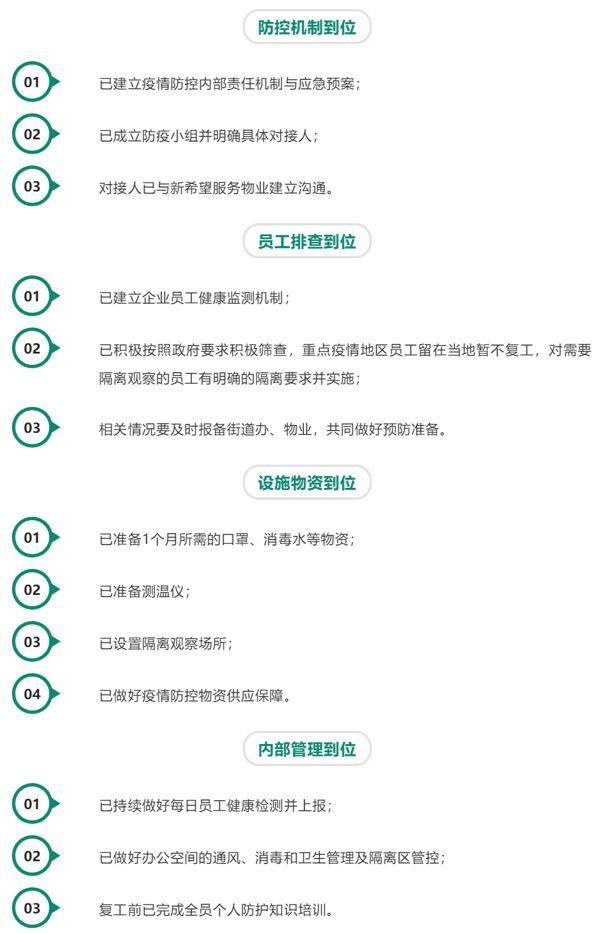
III. Poly Commercial Property
Under the guidance of Poly Property Headquarters, Poly Commercial Property quickly compiled a number of special guiding documents, which not only created a set of "2358" office building epidemic prevention practical guidelines for hard-core epidemic prevention, but also formed a number of characteristic business-run epidemic prevention measures to prepare for the epidemic prevention for the majority of businesses to return to work.
1, the addition of "epidemic prevention gas station":
Starting from the details, an "epidemic prevention gas station" was added in the lobby of each project, equipped with disposable disinfection supplies to provide disinfection convenience for the majority of businesses.
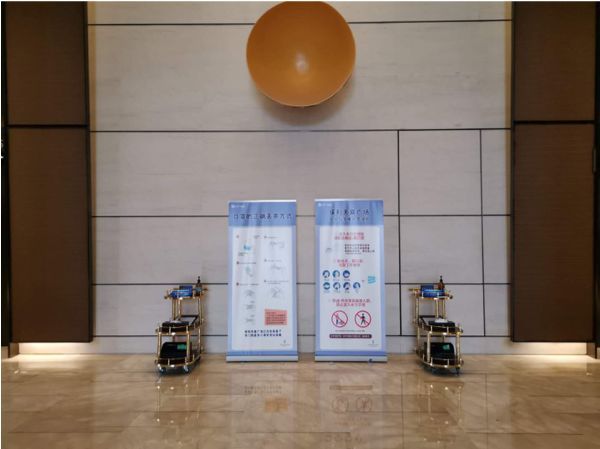
2, thermal imaging infrared temperature measurement:
Projects such as Tianmu Square, International Plaza and Poly Clovis are equipped with thermal imaging temperature measuring equipment for temperature measurement, which can efficiently, quickly and safely measure the temperature of personnel, speed up the entry of businesses and avoid crowd gathering.
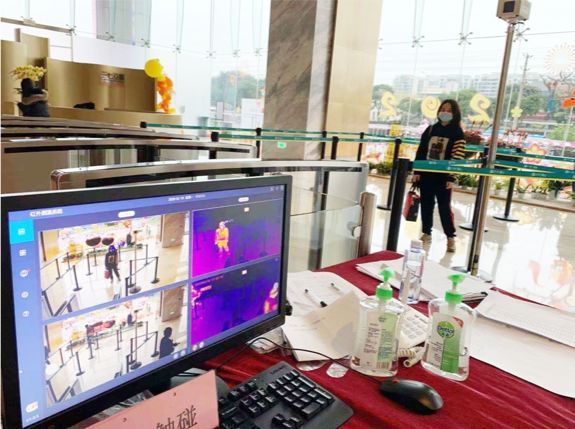
3. Special trash can for non-connected induction discarded masks:
Set up a non-contact intelligent induction trash can, and set up professional cleaning personnel to clean and disinfect it regularly, and then uniformly remove it from the street to reduce secondary pollution and infection caused by contact with pollutants when discarded.
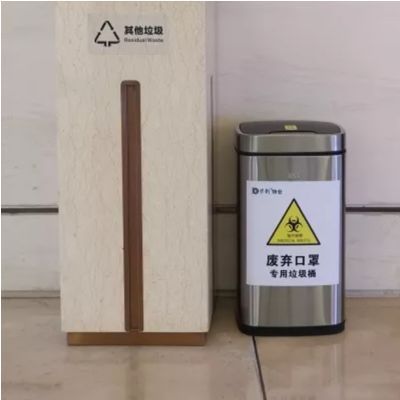
4. Stick a nine-square grid on the elevator, a floor sticker indicating the queuing interval at the entrance and exit of the lobby, and a sole disinfection pool.
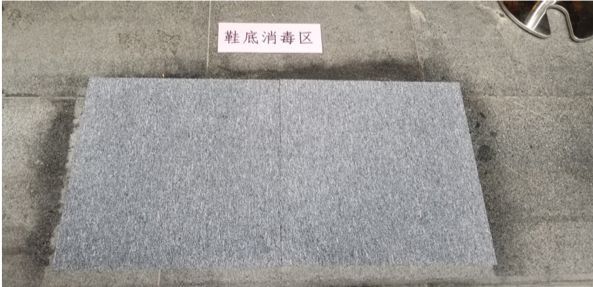
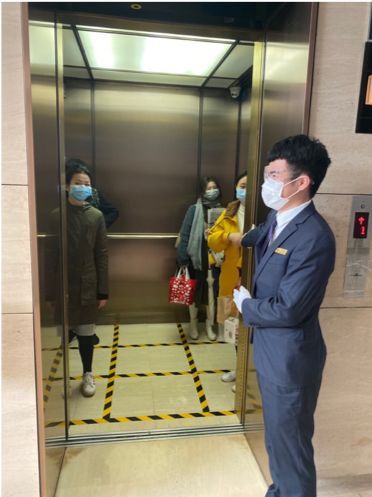
5, set up a takeaway pick-up point:
Staff canteens in office buildings shall formulate access guidelines, control the flow of people, replace in-class meals with takeout, and encourage bringing their own lunch boxes for healthy dining.
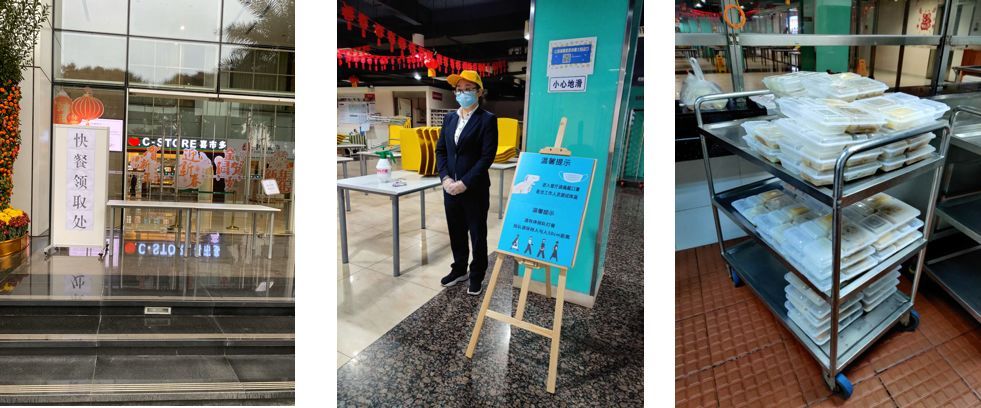
6, bottom business management:
Strengthen the patrol of shops and ask shops to do well in epidemic prevention work such as temperature measurement, disinfection and wearing masks; During the epidemic, convenience stores and restaurants were suspended.
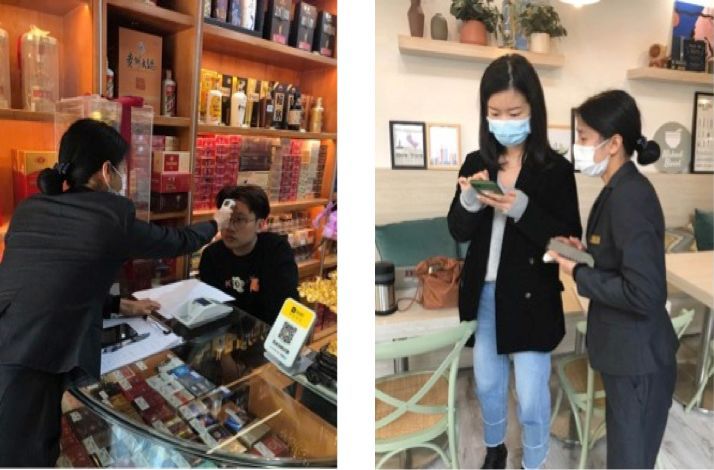
IV. Zhongzhou Property
At present, it is at the peak of enterprises’ resumption of work and production, and it is also the key node to promote the anti-epidemic work of commercial properties. Zhongzhou Property has strengthened prevention and control measures to fully support office customers to return to work safely and efficiently.
1, staff epidemic prevention training and pre-job self-examination, security to protect customers in order to protect customers more safely, all projects strengthen the protection and logistics support of on-the-job front-line employees to ensure adequate supply of materials; Conduct employee self-examination before taking up the post to enhance the awareness of prevention; Grasp the dynamic whereabouts of employees who have not returned to work, and return to work only after compulsory isolation.
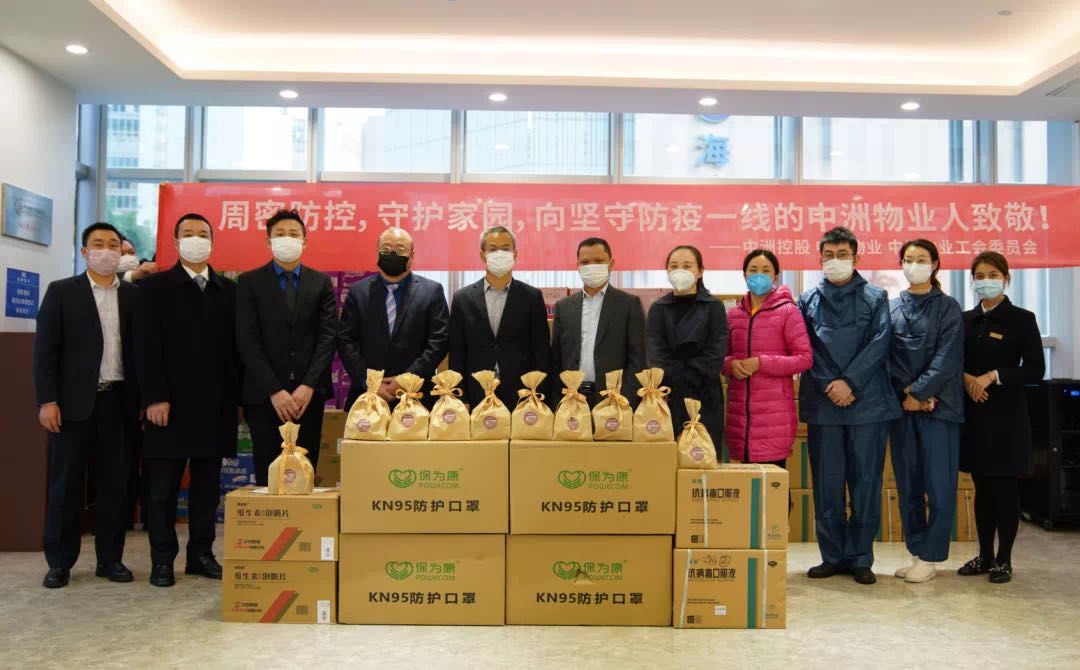
▲ In the case of national material shortage, each project mobilized all forces to reserve sufficient protective materials, and distributed protective gloves and masks to front-line employees every day to reassure employees and customers.
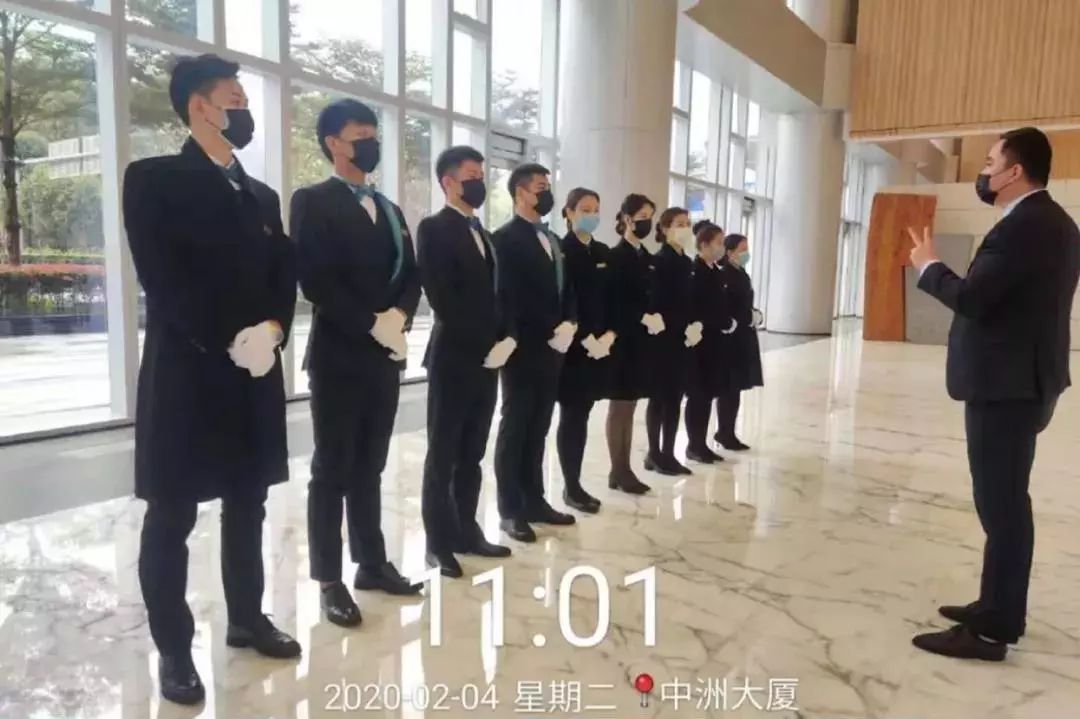
▲ Conduct daily knowledge training on epidemic prevention and control, so that everyone can understand and pay attention to the epidemic, so as to prevent the virus more effectively and scientifically; Front-line personnel self-test their body temperature before work every day, record the data, monitor in real time, and punch cards online for employees who have not returned to work every day.
2. Group prevention and control of the epidemic situation, and coordination of enterprises to return to work and fight the epidemic situation requires group prevention and control. At this time, the propaganda and prevention of the epidemic situation is particularly important. In the lobby of each office building project, various announcements such as warm tips on epidemic prevention, company epidemic prevention documents, epidemic prevention and control guidelines, etc. are placed, and important tips such as wearing masks and taking temperature when returning to work are broadcast on the electronic screen. At the same time, do our best to coordinate the resumption of work and production.
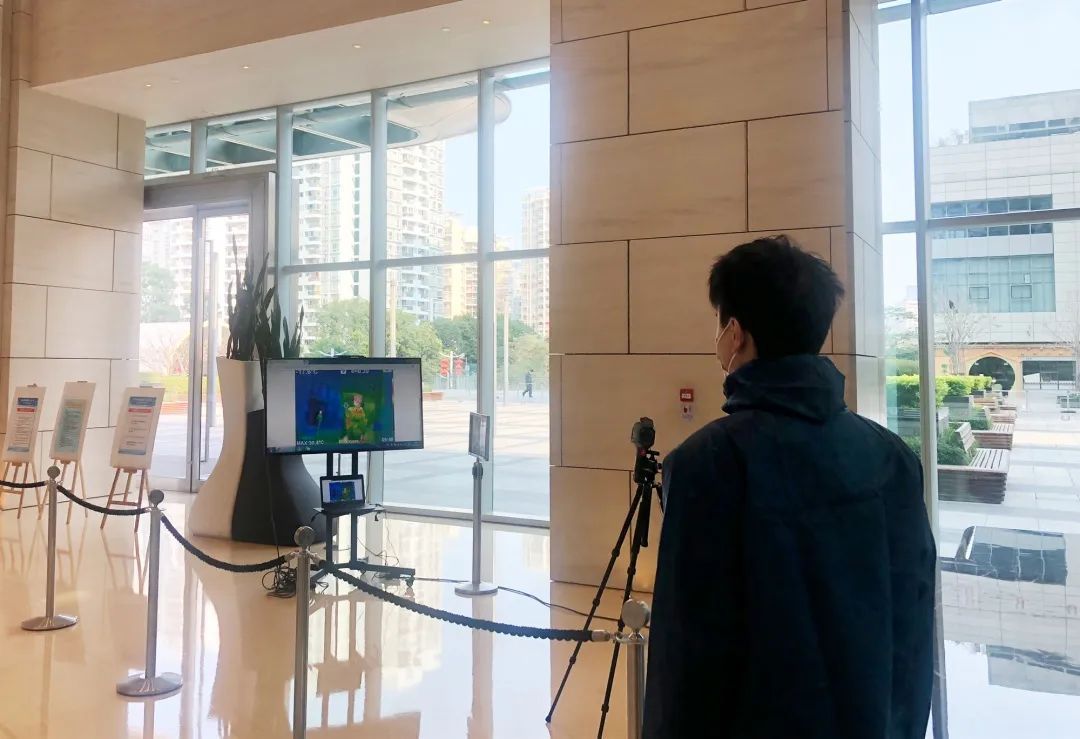
▲ Before the resumption of work, the property managers of each project repeatedly issued the notice of resumption of work in the customer base, actively assisted the enterprise to apply for resumption of work, kept in touch with customers at all times, and solved problems for customers online; And for the enterprises that have resumed work, disinfection and disinfection will be carried out to remind them to work in isolation and off-peak, and the property service center will do its utmost to help enterprises resume work safely.
3. Control personnel in and out, and build a security line to prevent the epidemic. SCC, Zhongzhou Building, Yiluan Building, Zhongjing Building, Quark Space and other projects will reduce the number of people/vehicles in and out, and set up epidemic monitoring points. If there is any abnormality, it will be reported in time. If there are external personnel working, health monitoring and registration are required; Customers and vehicles returning from outside the province are strictly registered, focusing on customers returning from Hubei. If there are fever cases, report them to the community for registration and testing in time.
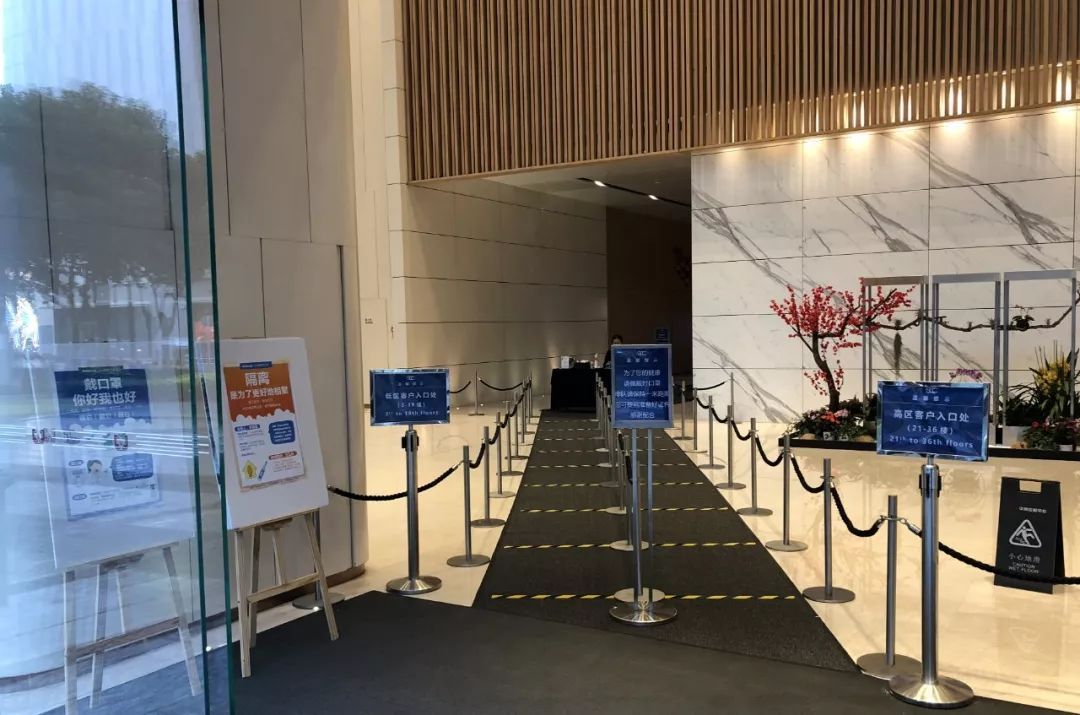
▲ Set up temperature detection zone and temporary isolation zone, and strictly control the import and export of personnel and vehicles: set up temperature detection zone and temporary isolation zone at the entrance of the lobby for each project to detect everyone entering and leaving the building, and some projects use thermal imaging thermometers.
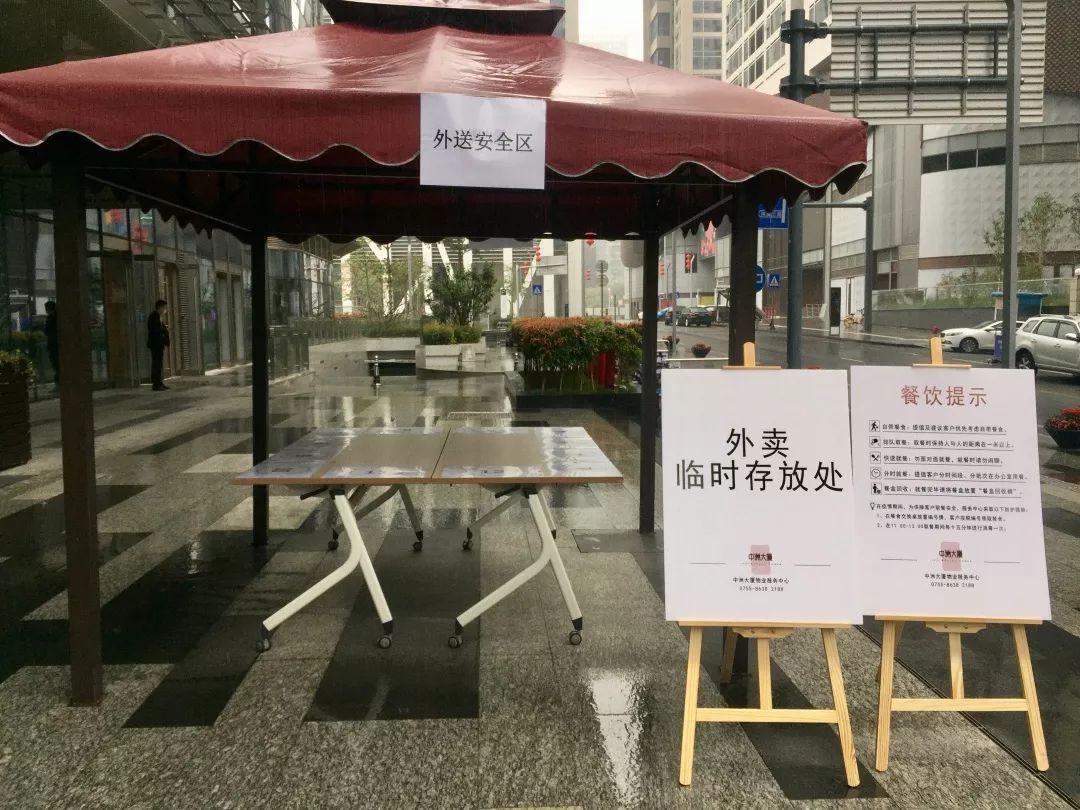
▲ Set up take-away and express transfer stations, lunch box recycling stations and special garbage bins for "discarded masks": In order to reduce personal contact, set up take-away and express transfer stations for each project for unified management and unified receiving and dispatching. At the same time, set up a lunch box recycling bin and a special garbage bin for "discarded lunch boxes" to separate the "discarded masks" from other garbage, and the property management personnel will disinfect them regularly.
4, scientific epidemic prevention, comprehensive disinfection office lobby public areas, elevators inside and outside, floor toilets, public central air conditioning and parking lot high-frequency disinfection, return to work project will adopt positive pressure air supply mode of central air conditioning, and open some curtain wall windows of the building to form ventilation convection, so as to ensure the safe supply of building ventilation and central air conditioning.
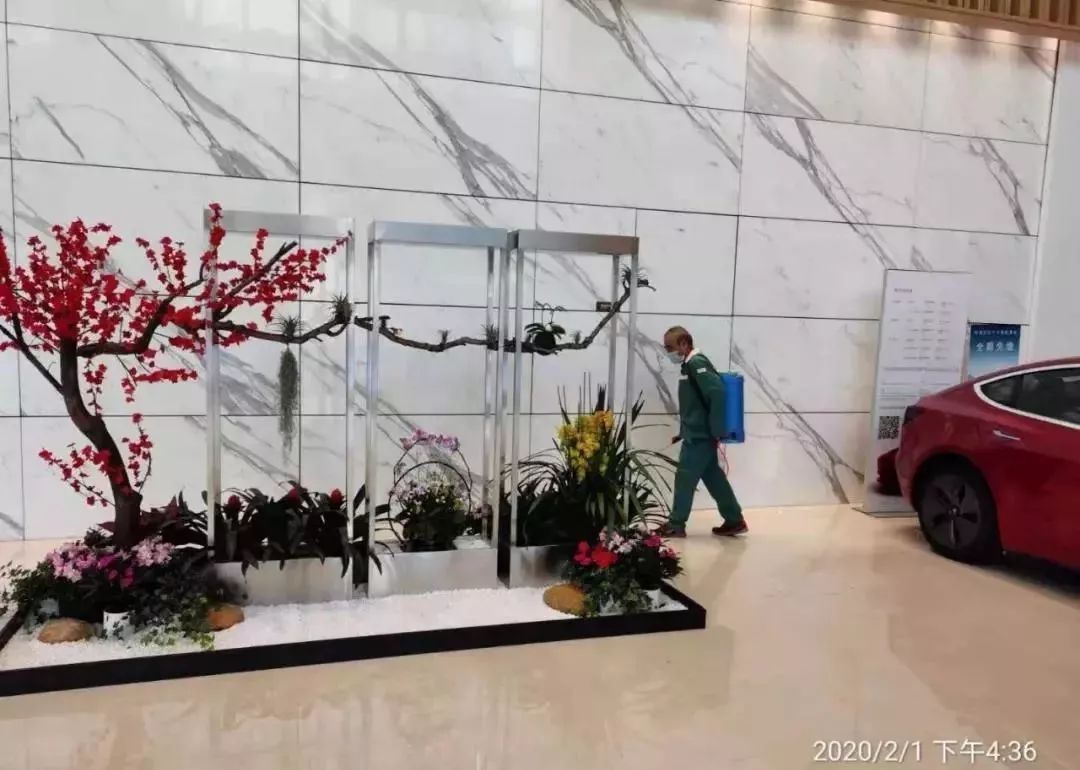
▲ High-frequency disinfection of public areas in the lobby, inside and outside elevators, floor toilets and parking lots of central air conditioners in public areas: property cleaning personnel disinfect public parts such as lobby, front desk, access gate, credit card reader and door handle every half hour; All lobby front desk, elevator hall, elevator and other dense places provide disposable disinfectant and disposable key paper for customers to access; Thoroughly and deeply clean and disinfect the bathroom sanitary ware at least twice a week; Disinfect and sterilize trash cans and garbage transfer stations in public areas at least twice a day without dead ends.

▲ Safeguard measures for central air-conditioning disinfection in public areas: the frequency of spraying disinfection at the outlet of central air-conditioning is increased to 4 times a day, so as to ensure that fresh air can be taken directly from the outside and there is no pollution source around, so as to keep the building fresh and meet the normal office needs; Each project focuses on cleaning, disinfection and disinfection of underground parking lots, garbage stations, greening around the project and all corners.
▲ Thoroughly disinfect important locations such as parking lots: each project focuses on cleaning, disinfection and disinfection of underground parking lots, garbage stations, greening around the project and all corners.
Extraordinary times, very protective. Zhongzhou Property declared war on the epidemic situation in COVID-19 with stricter control measures, more frequent environmental disinfection, more appropriate property management services and more efficient epidemic prevention actions, and took practical actions to protect businesses and defend their homes.
V. South China City Commercial Management
1, the introduction of special prevention and control guidelines, to adopt the "special rotation+party member Xianfeng Gang" model.
In order to help business owners in the park to improve their correct treatment of the epidemic, South China City Commercial Management issued the South China City Commercial Management Prevention novel coronavirus Epidemic Plan and the South China City Commercial Management novel coronavirus Epidemic Prevention and Control Operation Guide, so that every employee can understand the epidemic prevention and control and health knowledge, and carry out the epidemic prevention and control work correctly and effectively. In the publicity of prevention and control, the commercial management of South China City adopts the mode of "special person rotating guard+party member Xianfeng post", and the eight-city management project publicizes the knowledge of epidemic prevention and control around the clock.
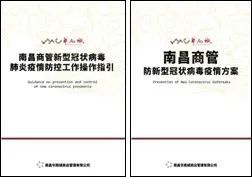
2. Strengthen the control of the first line of defense for import and export. The professional market in the park covers a large area. In order to pay attention to the effectiveness of card point setting, each professional market only has one main entrance and exit, and the staff is on duty 24 hours a day to check the passing vehicles, so that every vehicle must be inspected and no one is missed. A strict registration and confirmation system is implemented for foreign personnel, so that the number of foreign personnel is clear and the detection effect is ensured.
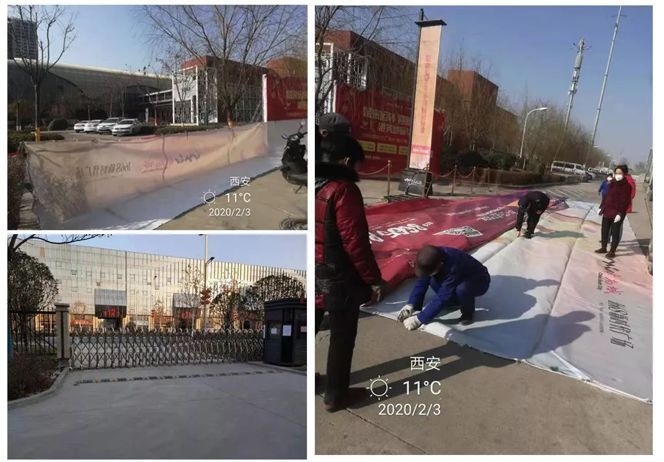
3. Cooperate with the government, closely track and report in real time. The leaders of South China City Commercial Management cooperated with the port area industrial and commercial bureau, law enforcement bureau and other departments to investigate the relevant personnel discovered by the big data of the Ministry of Public Security, and carried out key epidemic prevention and disinfection on the surrounding areas and vehicles of the merchant. At the same time, the staff closely followed the development of the situation, cooperated with the port industrial and commercial bureau and professional medical staff to carry out medical examination on specific personnel, and reported the personnel’s condition to the government and the company in real time to ensure the first response, the first arrival and the first solution.
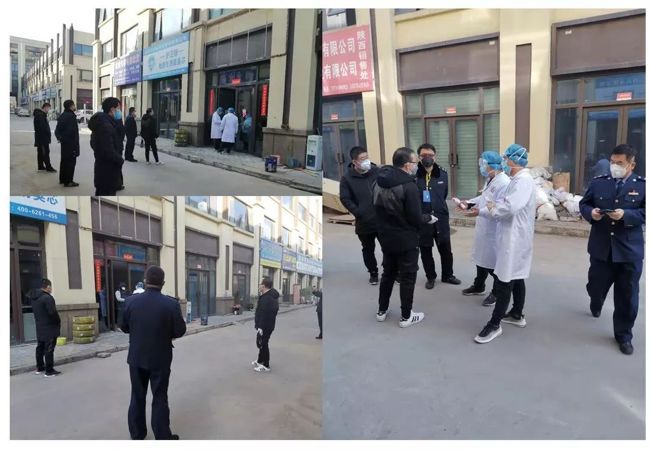
4. The matrix combination spread the propaganda of epidemic prevention and control everywhere. The leaders of the commercial management operation layer in South China City and the principal responsible persons of various departments went to work normally, issued prevention and control instructions in time, broadcast the prevention and control trends, closely monitored the implementation of epidemic prevention and control work in the park, and ensured that the organization, measures and publicity were in place. More than 3,000 epidemic prevention and control notices were posted and more than 800 banners were made. Outdoor big screen, real-time broadcast of epidemic prevention and control announcements and knowledge posters on outdoor LED screens at important intersections in various parks in the form of rolling play all day.
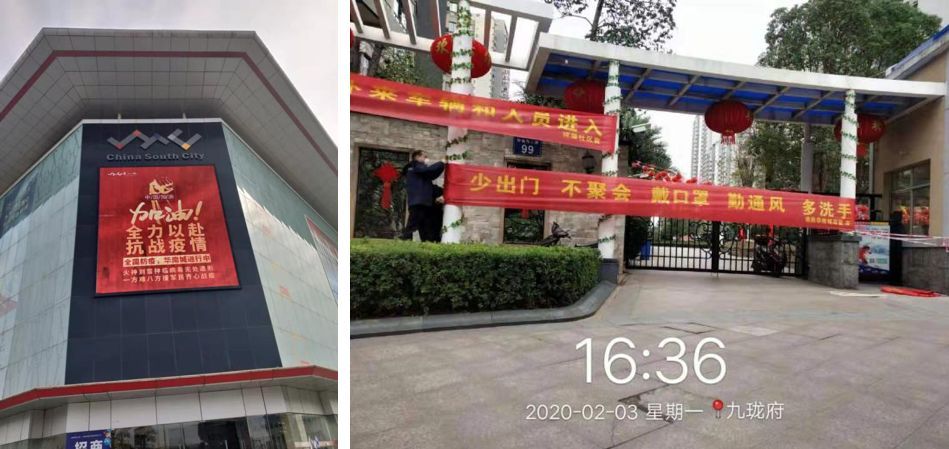
VI. Jindi Property
Jindi Property established a five-level prevention and control mechanism at the first time. Take Shenzhen Jindi Weixin Software Park as an example, because the property service team of Weixin Software Park experienced SARS in 2003 and accumulated rich experience, they quickly made an accurate prediction of the epidemic situation, timely reserved epidemic prevention materials, and deployed them to the relevant property service personnel in Shenzhen to rework on duty on the premise of meeting the government’s epidemic prevention screening and regulations for duty personnel.
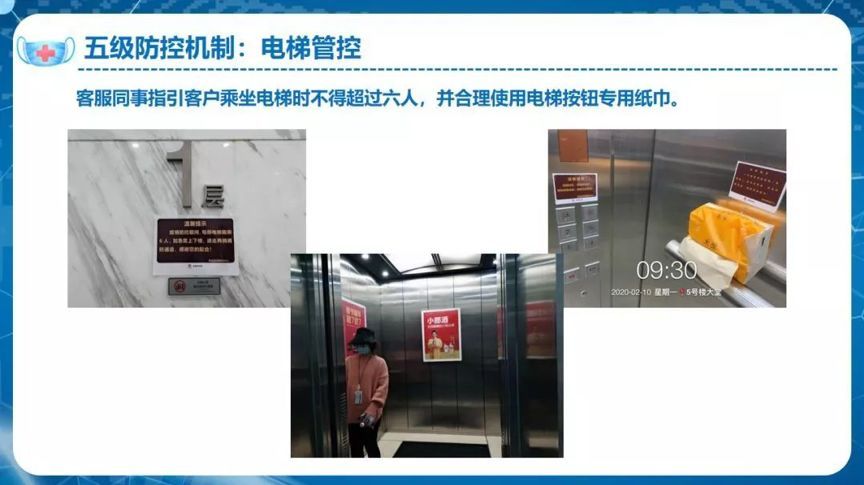
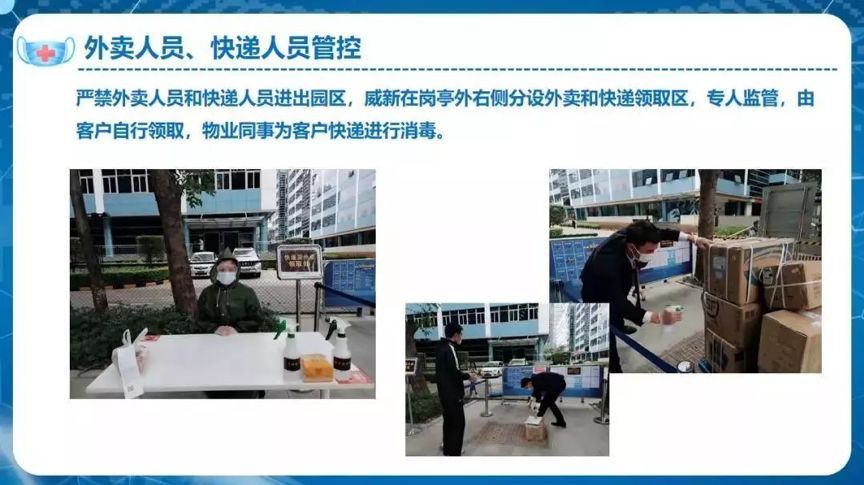
Part of the five-level epidemic prevention mechanism of Jindiweixin
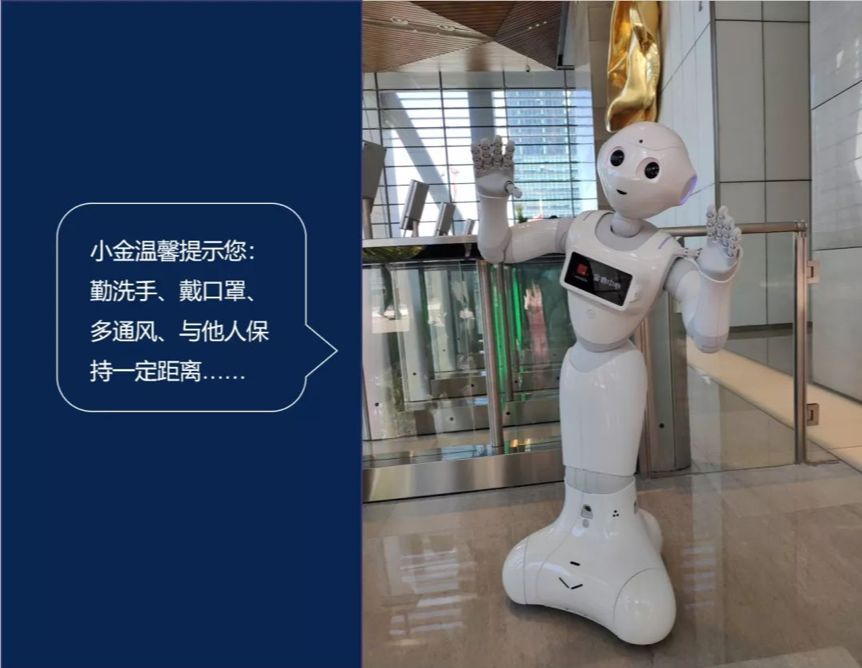
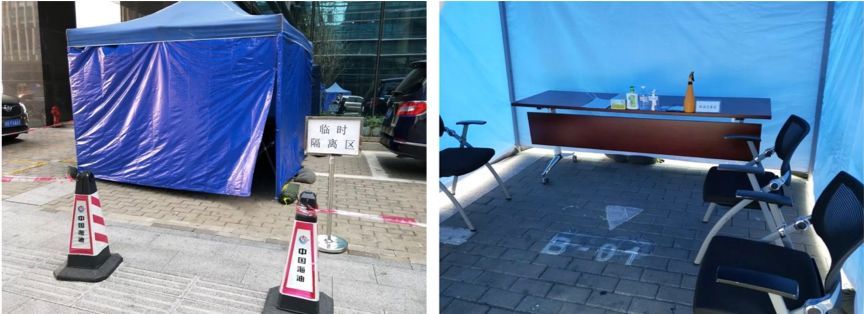
Set up temporary isolation zone
Yi Labao, exhibition stands, banners, etc. for epidemic prevention publicity are put into the project; Robot Xiaojin also joined the ranks of epidemic prevention propaganda; At the same time, do a good job in epidemic prevention tips at customer contacts. Comprehensively strengthen the epidemic prevention awareness of office workers in buildings.
Set up a temporary isolation zone. If the temperature is higher than 37.2℃, it should be isolated immediately, and report it to the command team immediately, organize the evacuation of personnel in relevant areas, and seal the relevant areas; After being proved by the hospital that the over-temperature personnel have eliminated the abnormality, organize the comprehensive disinfection of the work area; If abnormalities cannot be ruled out, or suspected cases with fever, cough, fatigue and other symptoms are found, they should be reported to the superior leaders at the first time, and then reported to the community, CDC and other relevant government departments after approval by the command group, and handled according to the guidance of professional departments.
At the same time, Jindi Property uses Jindi Commercial Service to manage APP Gelink intelligently to help fight the epidemic, and its business advocates online handling to reduce unnecessary close contact; Set up "Golden Day" protection tips online and regularly forward publicity and epidemic prevention knowledge. In addition, each project forms a daily epidemic prevention and control report and publishes it, which is open and transparent, so that customers can work with confidence.
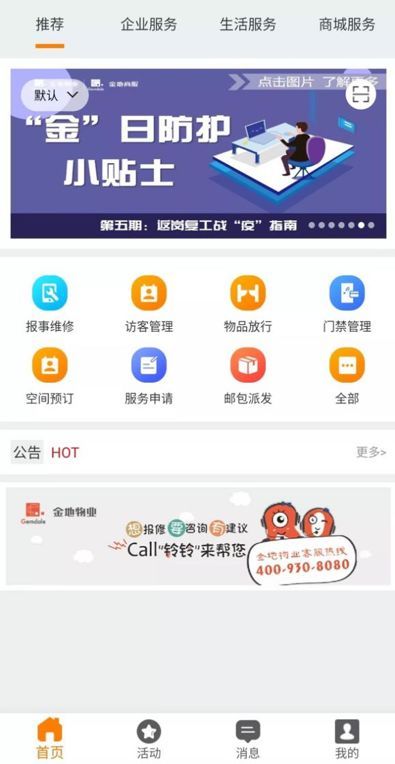
GelinkAPP helps epidemic prevention
Disclaimer: The views in this article only represent the author’s views. The copyright belongs to Yihan Think Tank.
Please do not reprint without authorization. If you need to reprint, please contact the backstage or leave a message after this article.
Please indicate the source when reprinting: ehresearch.
Thanks for your cooperation!
This article was first published on WeChat WeChat official account: Yihan Think Tank. The content of the article belongs to the author’s personal opinion and does not represent Hexun.com’s position. Investors should operate accordingly, at their own risk.
(Editor: Wang Zhiqiang HF013)

